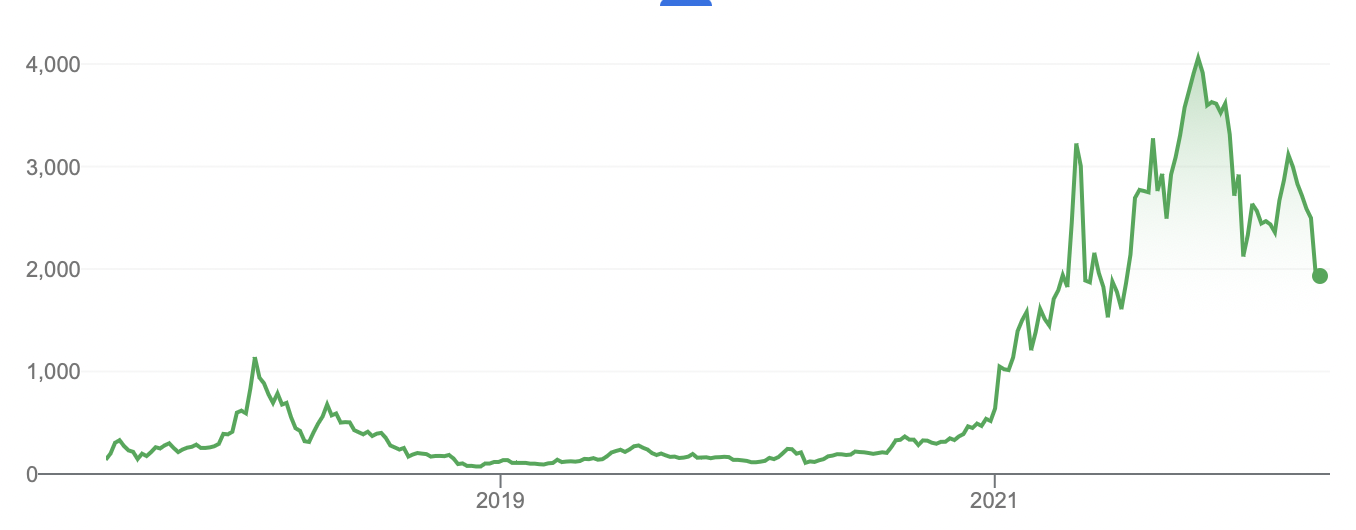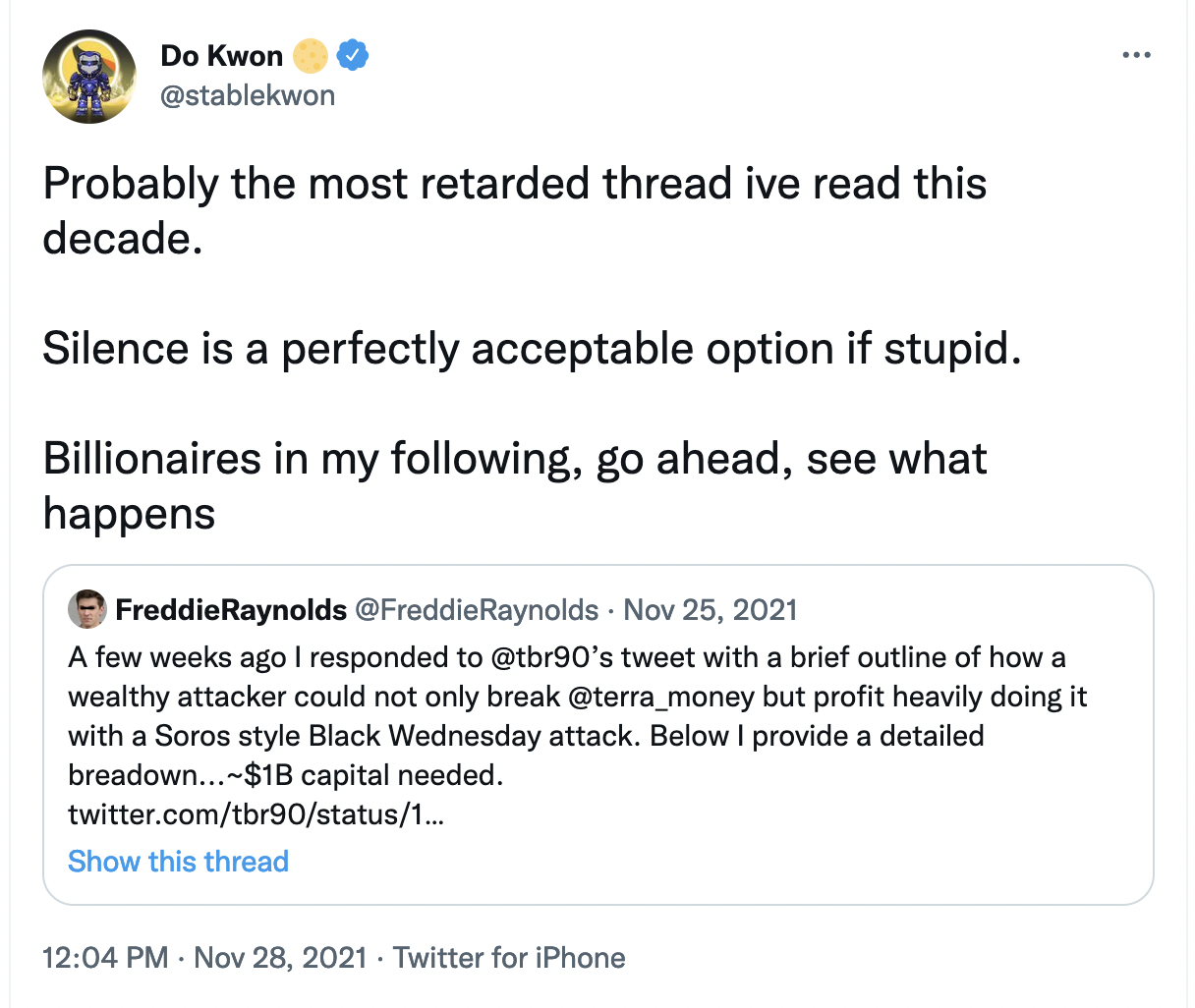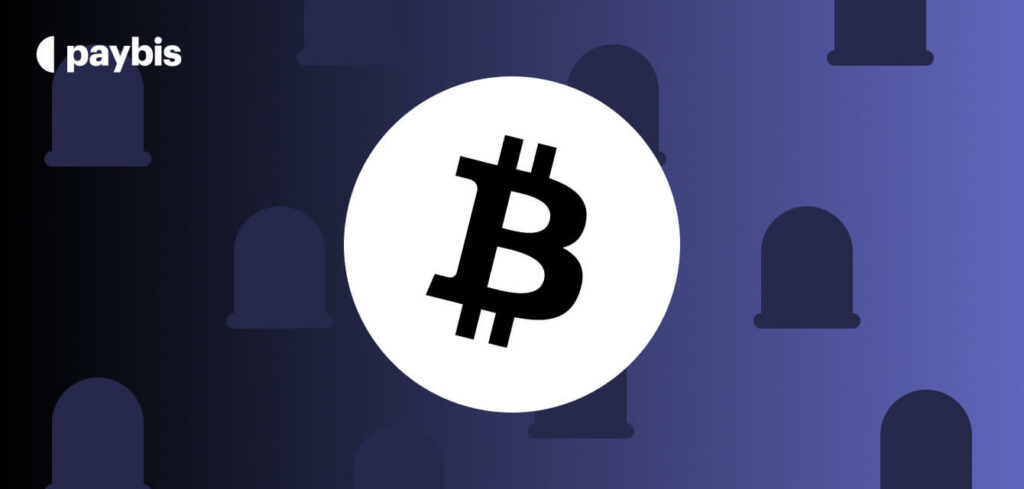Crypto Winter
A crypto winter, as the name suggests, is a prolonged period of basically frozen markets. Crypto prices aren’t necessarily declining anymore, but they’re not recovering, either – at least not to their previous levels.
Few things strike as much fear in the hearts of crypto enthusiasts as the dreaded crypto winter. Countless memes have been made about it, countless stories of wiped out savings have been told, countless “I told you so”’s have been thrown about.
On the other hand, the old adage “fortunes are born in bear markets” has a lot of truth in it. A crypto winter can be a great buying opportunity – although it definitely won’t look like one.
So what is a crypto winter, when will it happen and how can you survive one? Get your snow shovels ready, we’re digging in!
Table of contents
What is crypto winter and why it’s so fearsome
First, let’s sort out the lingo – what is a bear market and a crypto winter?
A bear market is a period of prolonged decline in asset prices. Of course, some short-lived declines happen even as the market is going up, so the threshold is usually set at a 20% decline over two months or more.
In and by itself, a bear market is not an extraordinary event – it’s part of the usual market cycle. Any serious investment strategy accounts for the possibility of bear markets and hopefully should be able to survive them. After all, no bear market lasts forever. Just as downturns are all but guaranteed to happen, they’ll also be followed by upturns – or bull markets which, in turn, are marked by prolonged periods of sustained growth.
So far, it all looks rather optimistic: if the crypto market goes down, it will eventually go up again. Right? Well, not so fast; a decline isn’t always followed by a swift recovery. It can also be followed by a crypto winter.
A crypto winter, as the name suggests, is a prolonged period of basically frozen markets. Crypto prices aren’t necessarily declining anymore, but they’re not recovering, either – at least not to their previous levels.

Crypto winters sound scary but, with some preparations and the right attitude, they can even be fun! Photo: Twitter
What’s more, the opposite isn’t true – or at least hasn’t been true so far (if you’re reading this in the future when this exact thing has happened – drop a comment below!) There hasn’t really been a period of high but stable crypto prices, at least not for the crypto market in general. When prices go up, they really go up, creating massive fear of missing out. Once they reach the top, it’s more of a spike, not a plateau.
Just like the real winter, a crypto winter can get dark, cold, and seemingly never ending. So how do you tell when it’s just another downturn and when is the next crypto winter?
When is the next crypto winter
Unfortunately, there are no easy answers here. Timing the market is notoriously difficult, as any seasoned crypto veteran will attest. Yes, there is a lot of market analysis around, and we provide our own takes on different crypto tokens on a regular basis. Still, any such analysis can only be used as food for thought, not the absolute truth: it is always your own decision when to buy and when to sell.
In any case, a successful investor must strike a balance: overt pessimism has its own costs. If someone says that a bear market is just around the corner, eventually they will be right – just because it’s part of the natural market cycle. You may, however, miss a solid bull run in the meantime, just because you’re waiting for the inevitable drop.
By the same measure, any claims that the only way is up are bound to be too optimistic. A rising tide lifts all boats: when the markets are rising, it’s tempting to think that this will never end. Nevertheless, some precautions are in order even when things are going great.
So instead, let’s consider what you can do to prepare for the next crypto winter – given that it’s always coming.
Preparing for the next crypto winter
What we’ll share with you here may sound like standard disclaimers – but don’t ignore them just because you’ve heard them before! There’s a reason why they exist, as we’ll try to explaim. Simply put, if you’re an investor, you’ll learn them sooner or later – the easy way or the hard way.
Keeping this in mind, let’s start with the basics: have a clear game plan. Before you make any investment decisions, you should know how much you’re willing to invest, why you choose this particular asset, what do you want to achieve with it and – probably most importantly – what are you going to do if things don’t go according to plan.
Make the plan as detailed as possible. “Get a lambo” is an aspirational goal, but not necessarily a detailed and quantifiable plan.
Also consider what you think of crypto. If you’re reading this, you’re probably at least somewhat interested in it. But again, make it more detailed. Do you think it’s a major technological development with long-lasting implications or more of a short-term trend that you must seize before it’s too late?
These two approaches will mean two very different game plans. If you believe crypto has a future, crypto winter is a temporary occurrence – growing pains of sorts. If you think crypto is a passing fad, crypto winter may feel like the end.
Now, we’re not giving any investment advice, but here’s one thing we can say: it’s probably better to invest in things you believe in. This allows you to take a long-term view – if you believe the asset is fundamentally sound, finding the perfect moment may not be as crucial. Spoiler alert, though: bear markets present some great opportunities even if you don’t believe in crypto – but we’ll get to that later.
Winterproofing your investments
Talking about investment advice. We say this a lot, and we really mean it: do your own research.
Doing your research means just that: not taking someone else’s word for it. If someone promises guaranteed returns that sound too good to be true, your own research is not learning how to invest in this. It’s researching how they plan to achieve this return, how realistic it is, what could go wrong and whether it’s a sound investment in the first place.
Try to remain objective and feel free to say no if any particular investment doesn’t feel right. The crypto market is remarkably diverse, and you can find other investment opportunities; there isn’t one single “once in a lifetime” opportunity.
Even if you do find the perfect opportunity, it’s a good idea to curb your enthusiasm and only invest what you can afford to lose. There are several reasons why this is important. First of all, any investment that promises high returns also comes with high risks. Crypto has generated massive returns, and it is notoriously high risk.
The next reason is less obvious: investing money you can afford to lose allows you to keep calm when the markets go down. Buying high when the market is going up and then panic selling when it’s down is a simple way to lose your money. If you don’t have to cut your costs at any price, you can afford to HODL, that is, keep your crypto even as it goes down, hoping it will recover in the future.

Ethereum price, 2017-2022. The crypto winter lasted for about two years but, if you could afford to HODL, your assets returned to growth. Graph: Google
But why HODL, you may ask? Isn’t it best to sell your crypto on the way down, buy back at the bottom and make a profit as it recovers? Of course, it would be – but that means you have to time the market just right, which brings us to the next topic.
Expect the black swans
The simple truth about timing the market is that it’s notoriously difficult to do, and there’s another thing that makes it even harder: black swan events.
Black swan events are defined as improbable and unexpected events that have a major impact when they happen. As they’re so improbable, it’s impossible to predict them. When they happen, however, they often seem obvious or even unavoidable in hindsight, leading people to exaggerate their importance.
The May 2022 Terra (LUNA) crash is a recent example. An attacker targeted its associated stablecoin UST, withdrawing and selling a substantial amount. This caused it to lose its 1:1 peg to the US dollar which, in turn, created the crypto equivalent of a bank run. Investors rushed to withdraw their money from UST, pushing the rate even lower. Billions of LUNA were minted in an effort to stabilize UST, decimating its price in the process: it went from USD 86 to more like USD 0.0086 in a week.
What’s more, the effort failed to restore the UST peg as customer confidence in the project had fallen dramatically.
It came as a surprise for most, especially those who had heavily invested in the token. There was, however, an advance warning from one Twitter user saying that the token is vulnerable to this kind of attack – dismissed by Do Kwon, the inventor of Terra, as “retarded”.

This did not age well, to say the least. Screenshot: Twitter
Now, a black swan event like this seems obvious in the hindsight, particularly because there was an advance warning. Does this mean that there’s something inherently wrong with crypto, though? Not necessarily. One particular token had one particular vulnerability that should have been fixed, rather than dismissed. Unfortunately, that’s part of the learning process with any new technology. Failures like these are taken into account and help design safer products in the future.
Crypto winter, ice age or extinction?
But what if there is something wrong with crypto? Just about every time there’s a downturn in the crypto market, you’ll inevitably read stories that it’s not just an asset going through a market cycle, it’s a speculative bubble that has finally burst.
We’ve covered this in our 5 crypto myths blog post, so we won’t repeat everything here. For now, let’s just say that, if crypto is a bubble, it’s a surprisingly lively one as it keeps popping back up every time it supposedly bursts.
We’ve been there before. Back in 2018, Fast Company dubbed Bitcoin “a hot potato nobody wants to touch” – although it still noted that “this almost certainly won’t be the end for bitcoin, or cryptocurrencies as a whole.” This, of course, turned out to be very much the case, although it took a while.
Or consider other bubbles. Crypto has often been likened to the Dutch tulip mania – so much so that there’s even an NFT collection paying tribute to it. This only lasted a year, though – and, far from wiping out the entire Dutch economy, tulips are now a beloved icon of the Netherlands.

In bloom: even the Dutch tulip market eventually recovered from its bust. Photo: Keukenhof
Another often mentioned bubble is the dot-com boom. A number of early online companies attracted notable investor interest in the late 1990s, peaking in early 2000. The e-commerce giant Amazon lost 90% of its stock price, and numerous companies went out of business altogether.
Does it mean that the online business idea was dead? Of course not; far from being an extinction event, the dot-com boom (and bust) barely shows up in Amazon’s stock price charts.
If you look at these examples, you see a pattern emerging. There is no denying that the bubbles were driven in part by market speculation, but they form around ideas that eventually do succeed.
Still, the success of Amazon means little for those who had invested heavily in one of the failed companies, such as Webvan. This brings us to diversification.
All your eggs in one basket
Basically, diversification means just HODLing a variety of tokens. If one fails, you still have other tokens left. Conversely, if one of them performs much better than the others, you have a star in your portfolio.
It is a long-standing investment strategy that was popular long before crypto – and the exact thing that could have saved an intrepid investor during the dot-com bubble.
There are several upsides to this strategy. For one, the fate of one particular token isn’t that important if it’s only one part of your portfolio. You’re also free to invest some money in riskier tokens, such as meme coins, knowing that you don’t have to go all in.
This approach, however, has its critics in the crypto community. They point out that crypto already has an undisputed star, namely, Bitcoin. It has already proved that it can survive major downturns and emerge stronger than before. On the other hand, if Bitcoin was to fall, it’s very unlikely that any other altcoin would survive or even thrive instead.
This belief is known as Bitcoin maximalism, and some adherents even go so far as to suggest that Bitcoin is the only crypto that will survive or be needed in the future. A crypto winter, the belief goes, is something akin to a cleansing – the lesser altcoins fail and the strong Bitcoin emerges victorious. As investment advisor Lyn Alden put it, “the various blockchain fleas that ride on [Bitcoins] coattails have to be shaken off once in a while.”
Now, it’s up to you to decide whether Bitcoin maximalism makes sense. At Paybis, we offer a wide range of cryptos, including, of course, Bitcoin. We believe that different projects provide additional value and innovation beyond Bitcoin, and the crypto space is large enough to include a wide variety of tokens.
Moreover, Bitcoin isn’t the only token that has survived crypto winters before. A number of older altcoins have been around for years, and some of them even appear staged for comeback – we’ve covered a few of them in previous blog posts. So don’t dismiss altcoins just because someone else says so – again, your own research is key.
It is true, however, that Bitcoin maximalism looks especially appealing during a crypto winter, as it is seen as a safer bet. Which finally brings us to the fun part – investing during a crypto winter, rather than just preparing for it.
Live long and prosper
Let’s get back to the saying that fortunes are born in bear markets. In theory, everything looks simple: a bear market is the perfect opportunity to buy any asset at a discount and sell it at a profit as it bounces back. Right?
Well, this only looks simple in hindsight. During an actual bear market, you’ll hear plenty of claims that crypto is about to die, so it takes determination to actually invest amidst a decline. Moreover, your investment may still decrease, even if it’s already down considerably from its all-time high. And, once you do invest, it may take years for the price to show some notable growth.
So how do you invest in this kind of market?
First of all, be patient: this may take a while. We’re not talking weeks or months; the previous crypto winter lasted from 2018 to 2020.
As noted, Bitcoin maximalism seems a particularly attractive option. A milder version of Bitcoin maximalism also includes Ethereum, acknowledging that the Ethereum blockchain does provide utility beyond Bitcoin. This is definitely one option: just buy Bitcoin and/or Ethereum and HODL it.
This may even work if you don’t believe that crypto has much of a future. As noted, even if Bitcoin is a bubble, it keeps popping up again and again – so maybe it’s not done yet. The bear market allows you to buy some Bitcoin at a substantial discount. In other words, if you think of Bitcoin as a gamble, you’ll gamble with less money and the potential reward will be higher.
Does it mean you should discount altcoins altogether? Maybe not. Yes, altcoins are unlikely to recover if Bitcoin doesn’t recover. On the other hand, once the recovery starts, altcoins may outperform Bitcoin.
Finally, you may want to keep an eye out for new tokens. Far from being a period of stagnation, bear markets actually are a great time to work on new projects. The status quo has been shaken up, and new products can succeed in the market. Don’t be surprised if the next big thing springs up during the next crypto winter!
Why crypto winter isn’t that fearsome
Let’s recap.
Bear markets and crypto winters get a bad rap, complete with stories of destroyed life savings, plenty of Schadenfreude and endless predictions of the imminent death of crypto. Still, far from being some unforeseen disaster, a bear market is a natural part of the market cycle for many assets.
There will be stories that crypto is different: it’s not going through a market cycle, it’s a bubble that has finally burst. There may even be some unforeseen black swan events, such as the collapse of some crypto token, that seem to confirm this. Remember, though: crypto has bounced back from declines before, emerging stronger than before.
There are steps you can take to prepare for a crypto winter. Having a clear game plan is a must – a downturn will feel less scary if you already know how you’ll react to it. Losses won’t be that painful if you’ve only invested what you could afford to lose – you even can afford to wait until your investment recovers.
Portfolio diversification is another option, although it does have its detractors. Our own opinion is that the crypto world has space for more tokens than just Bitcoin, but it’s your own decision.
As always, your own research remains the key. It may help you avoid some pitfalls and probably even predict the next market movements – although be prepared in any case.
If you’re prepared, crypto winter shouldn’t be that fearsome. You may even appreciate its bright side. For one, it is a great time to invest in crypto. If you’re a crypto optimist, you may think of it as the winter sale on all your favorite tokens. If you’re more cautious, you may still decide it’s worth a shot at this price.
And, of course, let’s not forget that crypto winters shake up the crypto markets, creating new things in the process. As the snow melts, you’ll be surprised at all the innovation that springs up!
So if you’re reading this during a downturn – keep calm and carry on. If you’re reading this during a bull market – enjoy the bull run but remember, the winter is coming. And, if you’re reading this just as the crypto winter is over – congratulations! It wasn’t that scary, was it?
What do you think? What is your experience with bear markets? Did we miss something? Let us know in the comments and share this article with other crypto enthusiasts who might need a bit of encouragement – or a timely reminder. And, as always, stay tuned for more blog posts!
Disclaimer: Don’t invest unless you’re prepared to lose all the money you invest. This is a high‑risk investment and you should not expect to be protected if something goes wrong. Take 2 mins to learn more at: https://go.payb.is/FCA-Info

![How to Protect Yourself From Dollar Collapse [2025 UPDATE]](https://paybis.com/blog/wp-content/uploads/2020/06/How-to-Protect-Yourself-From-Dollar-Collapse-1024x489.jpg)
